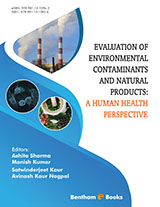Abstract
Although the status of microalgae as a primary producer in the aquatic environment is well-known, some algae are also an important biomass supporting our varied fishery resources as prey in fisheries industries. Algal blooms occur due to environmental changes in factors, such as temperature, salinity, nutrient concentrations, and light availability. The blooms occasionally result in serious damage to human activities including fisheries. Starting with information regarding several algal toxins from harmful algae, this chapter discusses the common characteristics of an algal bloom and several case studies of algal blooms causing fish-kill in coastal waters and aquaculture farms in Japan. In addition to low dissolved oxygen concentration induced by excessive proliferation of algae, some harmful algae produce distinctive toxins which contaminate marine foods like shellfish. Therefore, this chapter also outlines general features of algal toxins. The properties of bloom-forming algae described in this chapter require the fisheries industry and their related sectors to constantly monitor harmful algal blooms and verify whether the shellfish accumulates harmful algae.
Keywords: Chattonella, Fibrocapsa, Microalgae, Microcystin, Nodularin, Harmful algae, Heterosigma.








